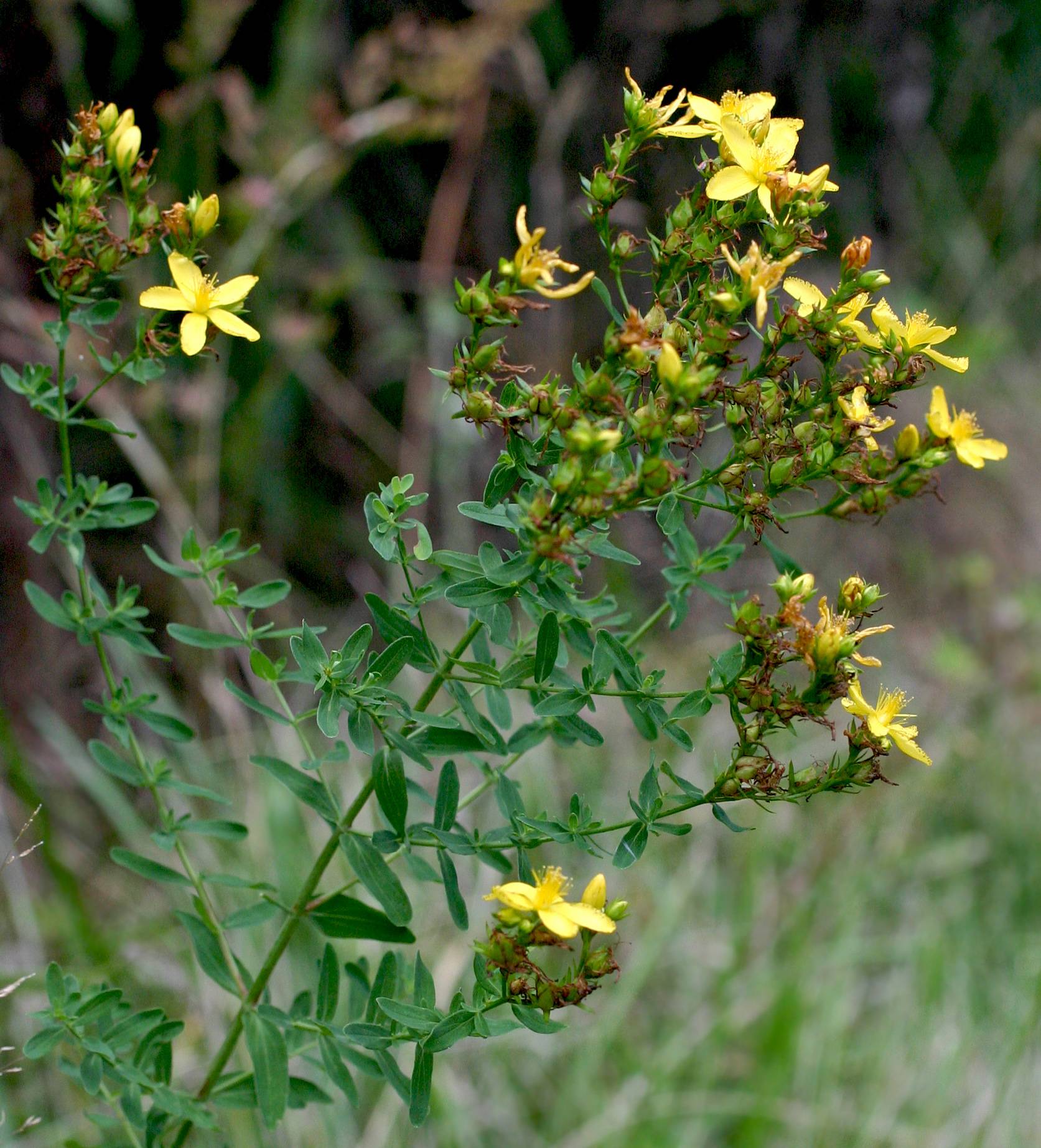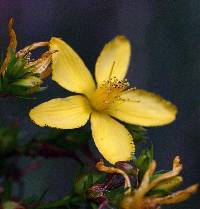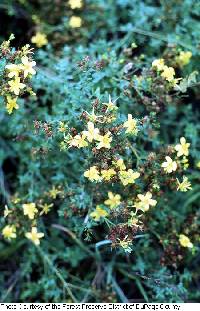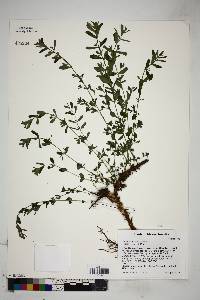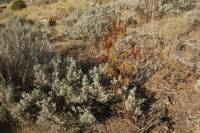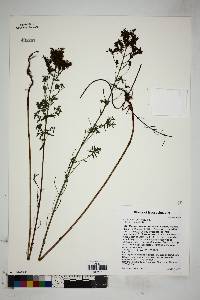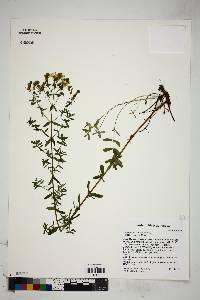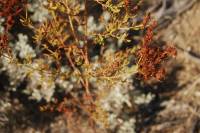|
|
|
|
Family: Hypericaceae
common St. Johnswort
|
Perennial herb 0.4 - 0.8 m tall Stem: with numerous opposite branch pairs alternating at 90 degree angles (decussate), sharply ridged at the base of each leaf. Leaves: opposite, stalkless, 2 - 4 cm long on main stalk, 1 - 2 cm long on branches, linear-oblong, non-toothed, covered with translucent glands. Flowers: borne in many-flowered, highly branched, compact, round- to flat-topped inflorescences. The sepals are 4 - 6 mm long, narrow lance-shaped with a pointed tip, and sometimes have a few black glands. Five petals are yellow with black specks concentrated along the margins, 8 - 12 mm long and oblong. The 50 to 80 stamens are clustered in three or five fascicles, the three styles are separated, and the stigmas are in dense head-like clusters. Fruit: is a three-chambered capsule containing many rough, 1 - 1.3 mm long seeds. Similar species: Hypericum adpressum, Hypericum ascyron, Hypericum perforatum, Hypericum punctatum, and Hypericum sphaerocarpum have more than 30 stamens per flower. Hypericum adpressum is distinguished because it is 30 cm - 0.8 m tall, the stems are usually unbranched below the inflorescence, the leaves are linear-oblong to narrow elliptic and curl under slightly, the flowers are less than 3 cm wide with 45 to 85 stamens and three styles that are attached for most of their length, and the capsules are less than 1 cm long and are beaked at the tip. Hypericum ascyron is 0.7 - 1.5 m tall, the leaves sometimes clasp around the stems, the flowers are 4 - 6 cm wide with 12 - 22 mm long petals, five styles, and numerous stamens, and the capsules are 1.5 - 3 cm long and lack a beak. Hypericum punctatum differs because it has non-angled and black-spotted stems with little branching below the inflorescence, its leaves are over 1 cm wide and covered with black dots, the flowers have sepals and petals covered with black dots and 30 to 60 stamens, and the seeds are nearly or entirely smooth and less than 1 mm long. Hypericum sphaerocarpum is 30 cm - 0.7 m tall, the stems are often clustered and become woody toward the base, the flowers are less than 3 cm across and have three united styles that separate near the tip and 45 to 85 stamens, and the one-chambered capsules are 5 - 7 mm long and narrow-beaked. Flowering: June to late September Habitat and ecology: This species is a common weed introduced from Europe. It grows in pastures, disturbed sand barrens, old sandy fields, and along roadsides and railroads. Occurence in the Chicago region: non-native Notes: Hypericum perforatum can be poisonous to livestock. It makes animals hypersensitive to light, especially those with light skin. A large amount of literature has been written about the use of this species for treatment of depression. Etymology: Hypericum is the Greek name for St. John's Wort, which blooms around St. John's Day (June 24). Perforatum means "with small holes,"referring to the tiny translucent glands that resemble holes when held in front of light. Author: The Morton Arboretum Branched perennial herb 7-15 dm; lvs lanceolate to elliptic, 4-10 cm, acute or obtuse, sessile and sometimes clasping; fls few, chiefly solitary at the ends of the branches, 4-6 cm wide; stamens very numerous, united at base into 5 sets; styles 5, united below but not persistent; stigmas capitate; fr ovoid, 15-30 mm, 5-locular. Moist soil; Que. to Minn., s. to Pa., Ind., and Kans. June-Aug. (H. ascyron, misapplied) Gleason, Henry A. & Cronquist, Arthur J. 1991. Manual of vascular plants of northeastern United States and adjacent Canada. lxxv + 910 pp. ©The New York Botanical Garden. All rights reserved. Used by permission. |


